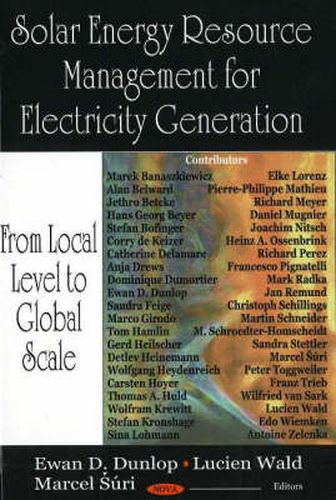Readings Newsletter
Become a Readings Member to make your shopping experience even easier.
Sign in or sign up for free!
You’re not far away from qualifying for FREE standard shipping within Australia
You’ve qualified for FREE standard shipping within Australia
The cart is loading…






This book addresses the rapid developments in the new field of solar resource knowledge as a reflection of growing needs of management of renewable energy resources. The authors have structured the content of this work as a set of contributions from the research, international and commercial institutions. The chapters discuss the availability of new primary data, basic concepts of research trends and approaches developed for providing higher resolution data and value-added products in an operational mode. Based on the experience from commercial and aid-providing sphere, individual and more generic barriers have been identified and solutions for overcoming them are discussed. The approaches exploiting geographical information systems, integrating spatial data and methods, outline directions for decision-making and management of distributed energy systems, considering regional and time variability at various hierarchical scales. The final contributions point out that the recent developments gave an impetus for complementing the traditional applications of Earth observation data by renewable energy programs.
$9.00 standard shipping within Australia
FREE standard shipping within Australia for orders over $100.00
Express & International shipping calculated at checkout
This book addresses the rapid developments in the new field of solar resource knowledge as a reflection of growing needs of management of renewable energy resources. The authors have structured the content of this work as a set of contributions from the research, international and commercial institutions. The chapters discuss the availability of new primary data, basic concepts of research trends and approaches developed for providing higher resolution data and value-added products in an operational mode. Based on the experience from commercial and aid-providing sphere, individual and more generic barriers have been identified and solutions for overcoming them are discussed. The approaches exploiting geographical information systems, integrating spatial data and methods, outline directions for decision-making and management of distributed energy systems, considering regional and time variability at various hierarchical scales. The final contributions point out that the recent developments gave an impetus for complementing the traditional applications of Earth observation data by renewable energy programs.